There is a chance that you have already heard about an African instrument that has a wooden board or a box and metal keys. The player would pluck the keys also known as tines to create sound and music.
The popularity of the thumb piano keeps growing, but there is one thing that many fail to understand. People often use kalimba and mbira interchangeably, while there are a lot of differences between the two.
So, what is the difference between kalimba and mbira? Mbira is an African instrument that originated in Zimbabwe over a thousand years ago. Kalimba, on the other hand, is only fifty years old, and it was designed by Hugh Tracey. As you can imagine, kalimba is a westernized younger version of mbira.
Thanks to Hugh Tracey, the popularity of this instrument spread outside of Africa, and many players can enjoy creating beautiful music on this unique instrument.
What Is Mbira

There have been several versions of lamellophones and idiophones in Africa. Lamellophones are musical instruments that have tongues made of metal or bamboo. The word itself comes from Latin lamellae. The first such instrument dates from 3,000 years ago, and it had tongues made of bamboo.
Furthermore, 1,300 years ago, a similar instrument appeared, but it used metal tines instead. The Shona from Zimbabwe became rather fond of this instrument, and today, we use their word – mbira.
If you check out these old instruments, you can notice that they often have two sets of keys over each other. Keys or tines can be either made of bamboo or metal, and the design of the instrument itself can significantly vary.
Over the years, mbira became popular across the continent, but not everyone had one. We can also see that these early instruments had thousands of different tunings, key layouts, shapes, sizes, and designs. Needless to say, people in Africa didn’t use Western music theory, and it seems that every one adjusted their instruments to their own liking.
It is possible to find mbira that offers a diatonic scale, but the keys won’t be in the same order as on its younger sibling. Moreover, some of the tones might be missing as well.
Another exciting feature that you can find on mbira only is distinctive buzzing. Whenever you play a note on mbira, you will hear the buzzing of tines, which add that special something to the sound of the instrument. Even though you can still tune mbira to the diatonic scale, it won’t magically become kalimba. The buzzing will remain, as well as its shape, and a double set of keys.
What Is Kalimba
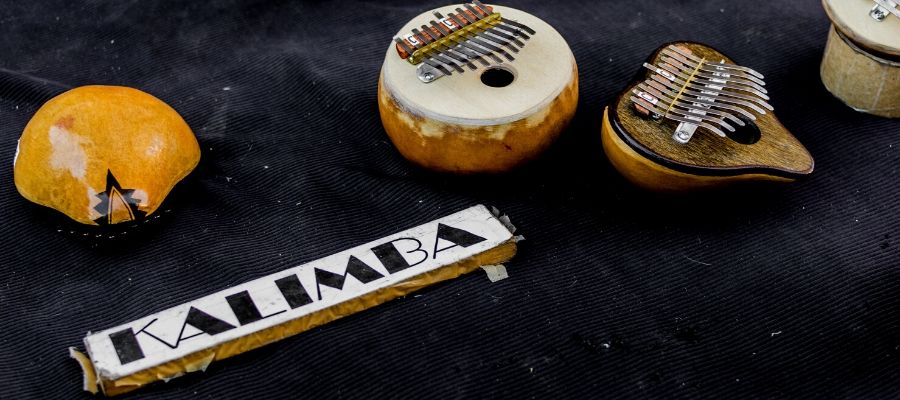
Hugh Tracey was an ethnomusicologist from England. He spent quite a lot of time in Africa, and with his wife, he recorded and collected African folk music. Some say that during his life he made over thirty thousand recordings with his wife.
In the mid-fifties, he designed an instrument that is similar to mbira and named it kalimba. Thanks to his work and effort, kalimba became popular worldwide. Hugh Tracey started creating kalimbas in 1954, with the idea of reaching both new players with different musical tastes and culture, as well as reaching back to players in Africa.
Kalimbas can have a wooden board or a resonating box, but you can find other materials as well. Unlike mbiras, there is only one set of tines, and they are tuned based on Western music. This means that you will find a diatonic scale, and you will be able to play any type of music you like.
The number of keys on kalimba can also vary, and you can find almost anything from five keys to seventeen. Most commonly, kalimba has seventeen keys, and it is in the key of C major. However, it is still possible to find other tunings as well, and you can tune your instrument any way you desire.
Kalimba often has additional holes (if there is a resonating box) to allow the player to create effects similar to wah pedal or to add vibrato. Of course, playing kalimba means that there is no additional buzzing, and players are looking for a clean and articulate note while playing this thumb piano. While I’m on the subject, Hugh Tracey disliked the term “thumb piano” since there are techniques that require you to use other fingers and not only thumbs.
Tines And Tuning On Kalimba And Mbira
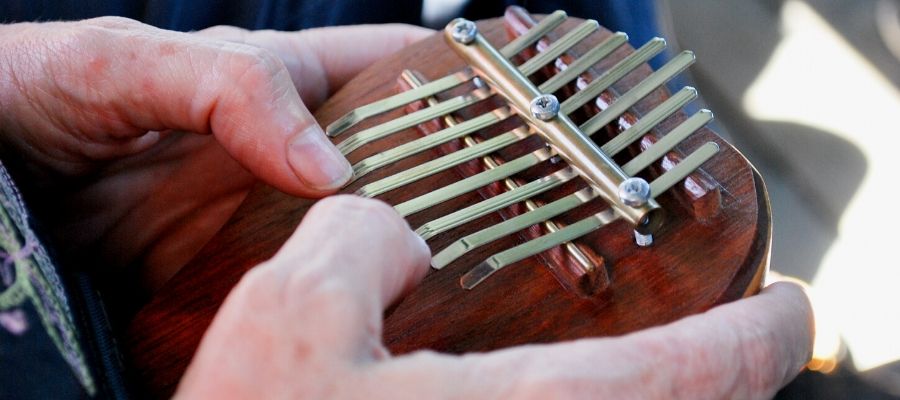
The first and most obvious difference in design is the number of tines. Kalimba can have any number of tines from five to seventeen. However, they are always in a single row. Mbira, on the other hand, has two rows of tines.
When it comes to tuning, the mbira is often similar to the Mixolydian mode, but you can find other non-Western tunings as well. The lowest note is usually in the middle, while higher ones are to the far right and far left.
Mbiras are focused on African music, which means that it is possible to find two adjacent tines being a part of the scale, and the next one unrelated to the first two. Tunings on mbira are also often idiosyncratic, with rich overtones and buzzing.
It is possible to tune mbira the same way as kalimba, but the difference in sound will still be present.
Kalimba, on the other hand, usually has some scale, where the longest tine is the root, and scale continues alternating from left to right. While this might not always be the case, it is the most common type of kalimba. Furthermore, the instrument is based on Western music theory, and this means that there will be a scale.
In the example of the C major kalimba, all notes will be from that scale regardless of the number of tines. This means that you can’t exactly hit a wrong note since all tines are in the key of C. This applies even to the 17-key kalimbas, which only have two and a half octaves.
Differences In Design
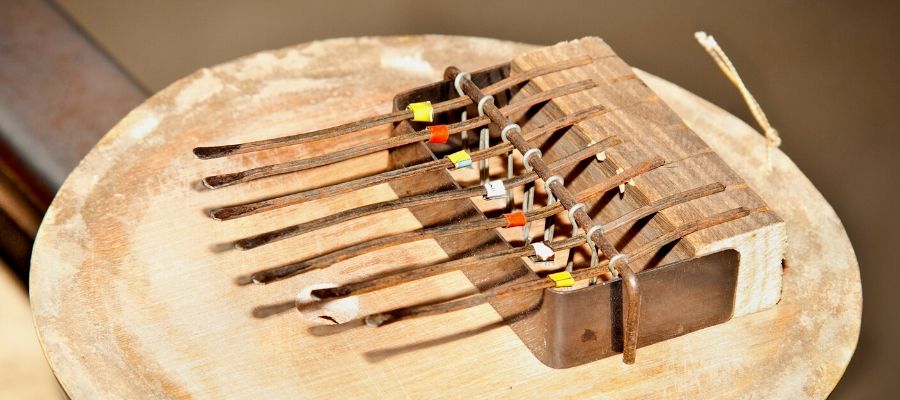
Both kalimba and mbira have similar designs. There is a wooden board or a resonating box, and tines are attached to the top. As I mentioned already, mbira has two rows of tines, while kalimba has a single one. Kalimba also has holes in the back or on the front side of the instrument for additional techniques.
Today, it is possible to find kalimbas using different, more modern materials like plastic, and since the shape of the board doesn’t determine the sound, the manufacturers can be creative. Some kalimbas are the size of a palm, while others are round or shaped like a kitten.
Traditional mbira is shaped like a box or a simple wooden board. The instrument often looks a lot rougher, and the tines are often wider.
Early mbiras were made of bamboo, while. Kalimbas, on the other hand, use mahogany, rosewood, sandalwood, walnut, and others. Tines are usually made of stainless steel or carbon steel.
Another important difference is that you can find kalimbas with a pickup. This means that you can simply plug them into a speaker or an amplifier, and record what you’re playing. Needless to say, this is not possible with traditional mbira.
Learning Kalimba And Mbira
Neither of these instruments is difficult to learn. However, kalimba is a bit easier since it is based on Western music you probably listen to. This is especially important if you already have experience with music or playing other instruments. Mbira isn’t focusing on scales you know, and learning it will require adjustment.
Furthermore, if you bought a kalimba, it is easy to find lessons and tablatures for this thumb piano. Many people online are playing it, and they are willing to share what they know. This means that you won’t have trouble finding ktabs for your favorite song.
Mbira, on the other hand, has tunings that are not common in popular music, and you might have some trouble adjusting to keys and their position. Even though some tunings are similar to Mixolydian, Dorian, Phrygian, and other modes, some notes might be missing from the scale, and playing mbira is a lot less intuitive.
Buying An Instrument

If you are looking to buy one of these instruments, my advice would be to go for kalimba. You can easily find it, and there are so many options to choose from. The price for a new kalimba can be as low as $10 or $20. For around $25, you can get a great 17-key instrument, that will undoubtedly satisfy your needs.
Mbira, however, is a bit trickier to find, since it is not as mass-produced as a kalimba. Many use the term wrongly to just sell regular kalimba, and if you find a really old instrument, it might cost you a small fortune.
The main difference between the two is accessibility and popularity. Finding a real mbira outside Africa might prove to be a challenging task.
Summary
If you are interested in African folk music or looking for a new instrument, you probably heard about kalimba. Some people use the term mbira to describe this thumb piano, while they are essentially different instruments. Mbira originated over a hundred years ago in Africa and gained a certain level of popularity across the continent.
Kalimba is a westernized version of mbira, and it was designed by Hugh Tracey in 1954. As you can imagine, kalimba follows the rules of the Western music theory, and the most common type is in the C major scale.
Mbiras use various tunings, and they are often unrelated to music theory you might have learned in school. The tines are not aligned in the same order as on the kalimba, and there might be a couple of notes missing from a scale. Another significant difference between these two instruments is that mbira has a double set of keys (or tines), while kalimba has a single one.
If you are looking to get one of these two, kalimba is the safe choice since you will be able to play your favorite songs on it. Moreover, it is rather easy to find, and you won’t need to spend months searching for it.
If you found this article useful you may want to save this pin below to your Kalimba board
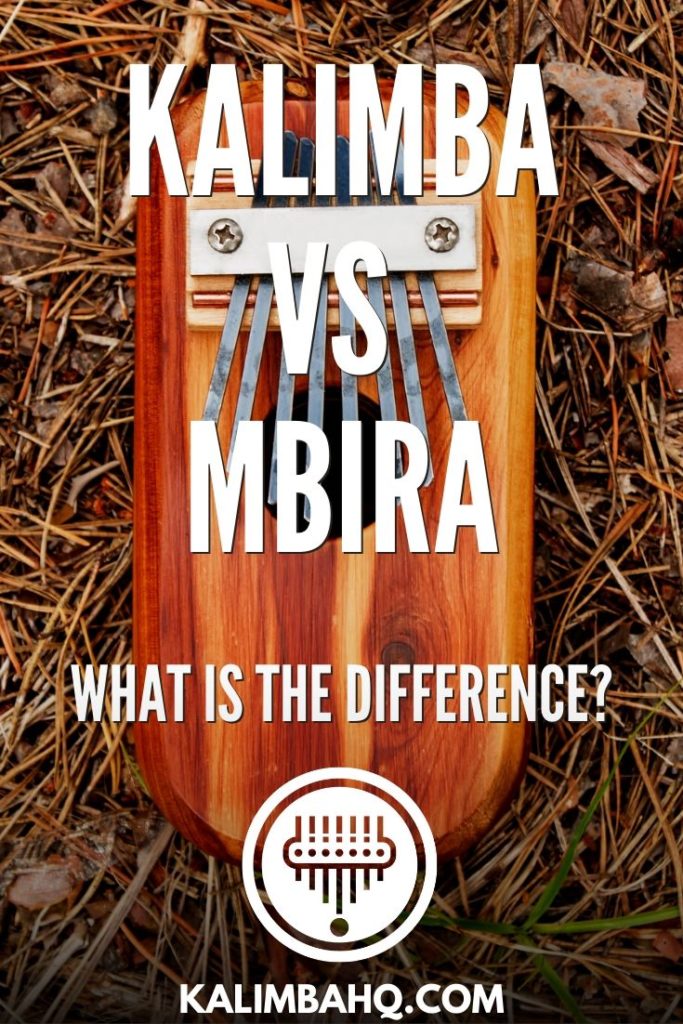
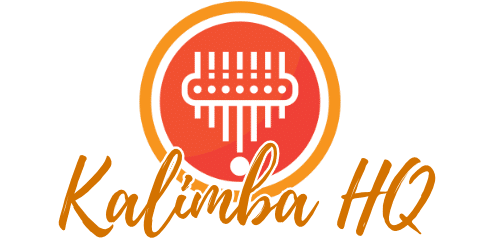

Awesome explanation thank you!